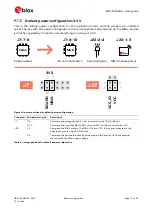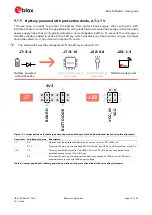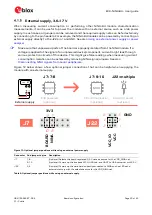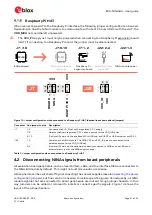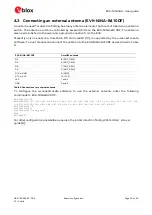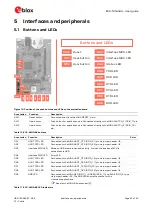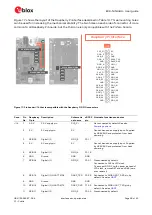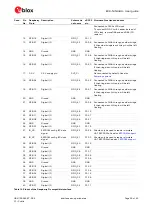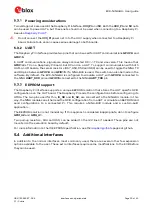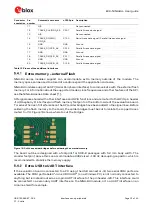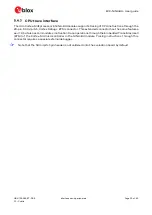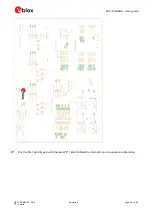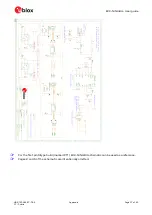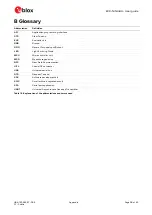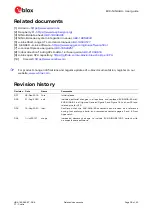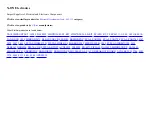
EVK-NINA-B4 - User guide
UBX-19054587 - R04
Interfaces and peripherals
Page 30 of 40
C1 - Public
Powering considerations
Two voltage nets are used in the Raspberry Pi interface,
3V3_PI
and
5V
. Both the
3V3_PI
and
5V
nets
can be used to power HATs, but these nets should not be used when connecting to a Raspberry Pi.
See also
Raspberry Pi HAT
.
⚠
Do not connect the
3V3_PI
power net m to the 3.3 V supply when connected to a Raspberry Pi
board. Failure to do so can cause serious damage to both boards.
UART
The Raspberry Pi interface provides two pins that can be used for UART communications
GPIO14
and
GPIO15
.
In UART communications, signals are always connected RX <-> TX and vice versa. This means that
GPIO14
is TX on a Raspberry Pi board, but RX and on a HAT. To support communication with both
HATs and Pi boards, the zero
Ω
resistors (R57, R58, R59 and R60) can be used to toggle the NINA TX
and RX pins between
GPIO14
and
GPIO15
. If a NINA-B40 is used, this switch can also be made in the
software. By default, the EVK-NINA-B4 is configured to simulate a HAT, with
GPIO14
connected to
the NINA
UART_RXD
pin and
GPIO15
connected to the NINA
UART_TXD
pin.
EEPROM support
The Raspberry Pi interface supports a unique EEPROM solution that stores the HAT specific GPIO
configurations on the HAT board. The Raspberry Pi reads the configurations before configuring its
GPIOs. The two pins used for this,
ID_SD
and
ID_SC
, are connected to the NINA-B4 module. In this
way, the NINA module can either read the GPIO configuration from a HAT or simulate an EEPROM and
send configurations to a connected Pi. This requires a NINA-B40 module and a custom-built
application.
The EEPROM solution is not mandatory. If this approach considered inappropriate, do not configure
GPIO_42
and
GPIO_41
.
Two pull-up resistors, R44 and R50, can be added to the I2C lines if needed. These pins are not
mounted on the evaluation board by default.
For more information on the ID EEPROM specification, see the
raspberrypi/hats
pages at github.
5.4
Additional Interfaces
In addition to the normal interfaces most commonly used, there are several other few expansion
options available to the user. These extra interfaces require some modifications to the EVB before
they can be used.


